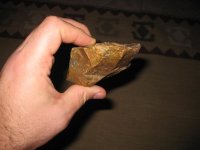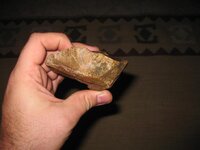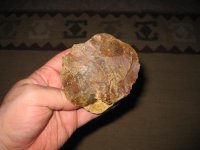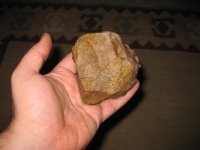uniface
Silver Member
Better late than never, I guess (said with egg on face) 


I had been operating under the assumption that lamellar core-&-blade technology (except for the Hopewell era) was pretty much restricted to (and diagnostic of) the Paleoindian era.
Then Neanderthal pointed out that, in and around Texas, it continued (sometimes) into the Jarrell Phase (Early Archaic) there.
Now Pleo, at arrowheadology, has posted pics. of re-touched blades from the Toya (Woodland -- I think) era there (even later than Hopewell) that convince me that I was totally FOS as far as Texica & that area in general are concerned.
It probably isn't cool to recommend that people go there to look at them, since you have to register to see the pictures, but if you're finding stuff in or around Texas you're assuming is Paleo (or you relied on my opinion that it must be), I'd seriously consider doing so for the educational value. The thread is Clovis Cores in the Arrowhead & Indian Relics section of the Forum there.



I had been operating under the assumption that lamellar core-&-blade technology (except for the Hopewell era) was pretty much restricted to (and diagnostic of) the Paleoindian era.
Then Neanderthal pointed out that, in and around Texas, it continued (sometimes) into the Jarrell Phase (Early Archaic) there.
Now Pleo, at arrowheadology, has posted pics. of re-touched blades from the Toya (Woodland -- I think) era there (even later than Hopewell) that convince me that I was totally FOS as far as Texica & that area in general are concerned.
It probably isn't cool to recommend that people go there to look at them, since you have to register to see the pictures, but if you're finding stuff in or around Texas you're assuming is Paleo (or you relied on my opinion that it must be), I'd seriously consider doing so for the educational value. The thread is Clovis Cores in the Arrowhead & Indian Relics section of the Forum there.
Amazon Forum Fav 👍
Upvote
0







